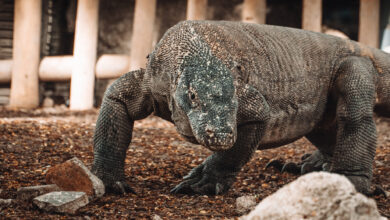17 Facts about Cheddar Gorge, Somerset, England
Cheddar Gorge is a natural limestone gorge located in the county of Somerset, England. It is an area of outstanding natural beauty and a popular tourist destination, with its stunning cliffs, caves, and rock formations. Here are some interesting facts about Cheddar Gorge:
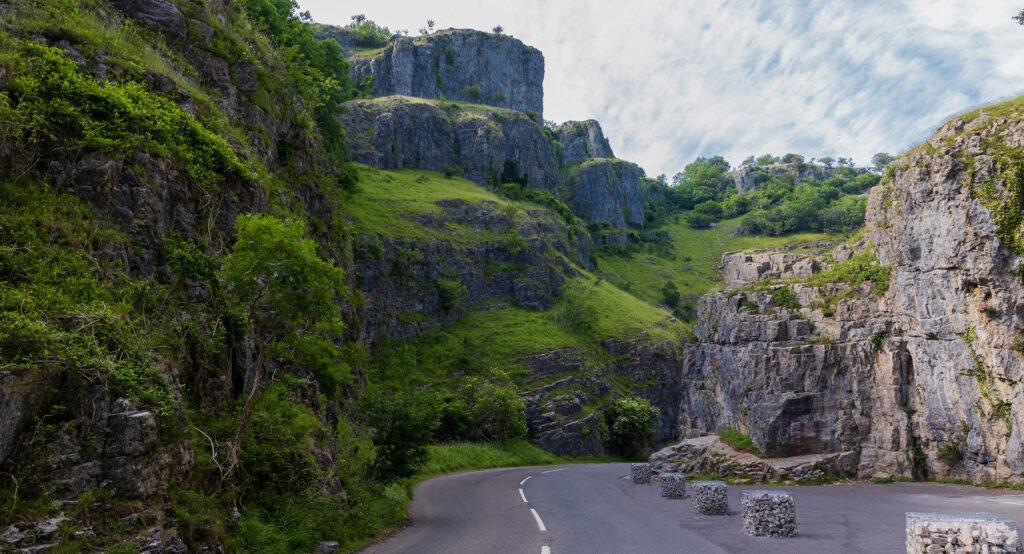
Cheddar Gorge is a limestone gorge located in the Mendip Hills, in Somerset, England.
1 The Mendip Hills is a range of limestone hills and plateaus that extend from the Bristol Channel in the west to Frome in the east.
Cheddar Gorge is one of the most famous features of the Mendip Hills, and it is a popular destination for tourists and outdoor enthusiasts.
The gorge was formed by glacial meltwater during the last Ice Age, around 1.2 million years ago.
2 The movement of the meltwater eroded the limestone rock and created the deep, narrow gorge that we see today.
The process of erosion continued over thousands of years, creating the spectacular cliffs and rock formations that are characteristic of the gorge.
Today, Cheddar Gorge is recognized as one of the most impressive examples of a limestone gorge in Britain.
Cheddar Gorge is home to Britain’s largest inland limestone cliff, which is called “Jacob’s Ladder”.
3 This rises to a height of approximately 450 feet (137 meters). The cliff is a popular spot for rock climbing, and it offers stunning views of the surrounding landscape.
The limestone cliffs of Cheddar Gorge are also notable for their distinctive shapes and patterns, which have been shaped by thousands of years of erosion by wind, water, and ice.
The cliffs are an important part of the natural heritage of the Mendip Hills and are protected as a Site of Special Scientific Interest (SSSI) and a National Nature Reserve.
The gorge is famous for its caves, which have been inhabited by humans for over 10,000 years.
4 The oldest human remains found in the gorge are those of Cheddar Man, who lived around 9,000 years ago and is one of the oldest complete skeletons found in Britain.
The caves have been used for a variety of purposes throughout history, including as shelter, storage, and ritual sites.
Today, the caves are a popular tourist attraction, and visitors can explore the underground chambers and learn about the history and geology of the area.
Some of the most famous caves in the gorge include Gough’s Cave, Cox’s Cave, and the Crystal Quest.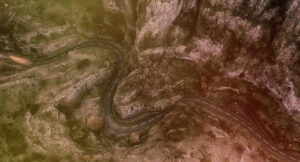
The gorge is also home to a variety of wildlife, including peregrine falcons, badgers, and bats.
5 The gorge provides a unique habitat for a variety of plants and animals, including rare and endangered species.
The steep cliffs and rocky outcrops provide nesting sites for peregrine falcons, which are one of the fastest birds in the world. The gorge is also home to badgers, which can often be seen foraging for food at dusk and dawn.
In addition, Cheddar Gorge is an important habitat for several species of bats, including the greater horseshoe bat, which is one of the rarest bat species in the UK.
These bats roost in the caves and use the gorge as a feeding ground. As a result of its unique ecology, Cheddar Gorge is designated as a Site of Special Scientific Interest (SSSI) and a National Nature Reserve.
Cheddar Gorge is a popular tourist destination, and there are several attractions that visitors can enjoy.
6 Some of the most popular attractions in and around the gorge include:
- The Cheddar Gorge Cheese Company: This is a popular destination for cheese lovers, and visitors can see how cheddar cheese is made and sample some of the different varieties.
- The Cheddar Gorge and Caves Museum: This museum tells the story of the area’s history, geology, and wildlife, and visitors can explore the caves and learn about their fascinating past.
- Cliff-top walks: The gorge offers several scenic walks along the clifftops, providing stunning views of the surrounding landscape.
- Rock climbing: The steep limestone cliffs of Cheddar Gorge offer a challenging and exciting climbing experience for experienced climbers.
- Gorge walks: There are several walks that wind through the gorge itself, offering a chance to explore the narrow canyons and hidden caves.
- Outdoor activities: The gorge is a popular destination for outdoor activities, such as caving, abseiling, and mountain biking.
- Events: Cheddar Gorge hosts several events throughout the year, including the popular Christmas illuminations, which see the cliffs lit up with thousands of lights.
These are just a few of the attractions that visitors can enjoy in and around Cheddar Gorge. Whether you’re interested in history, nature, or outdoor adventure, there’s something for everyone to enjoy in this beautiful part of England.
Cheddar Gorge became a popular destination for Victorian tourists in the 19th century.
7 The gorge was discovered by the wider public in the early 1800s, and it quickly became a popular destination for people seeking adventure and natural beauty.
Visitors would come to the gorge to explore the caves and climb the cliffs, and many would stay in the nearby village of Cheddar, which developed into a thriving tourist town.
The opening of the Cheddar Valley railway in 1869 made the gorge more accessible, and it became an increasingly popular destination for day-trippers and holidaymakers.
Today, Cheddar Gorge remains a popular tourist destination, and it attracts visitors from all over the world who come to admire its stunning scenery, rich history, and unique wildlife.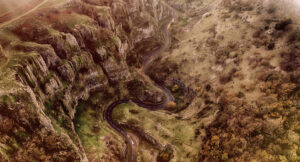
The Cheddar Gorge Marathon, a popular running event, takes place in the gorge every year.
8 The marathon is organized by Relish Running Races, and it attracts runners from all over the UK and beyond.
The route takes runners through the beautiful countryside around Cheddar Gorge, and it includes several challenging hills and steep climbs.
The marathon is just one of several running events that take place in the area, and the gorge is a popular destination for runners and hikers who come to explore the trails and enjoy the stunning scenery.
Whether you’re a serious athlete or just looking for a scenic jog, the Cheddar Gorge Marathon is a great way to experience the beauty and excitement of this unique part of England.
Cheddar Gorge has been used as a filming location for several movies and TV shows over the years.
9 The dramatic cliffs and rugged landscape of the gorge make it a popular choice for filmmakers who are looking for a stunning and unique location. Some of the movies and TV shows that have been filmed in and around Cheddar Gorge include:
Doctor Who: Several episodes of the popular science fiction show have been filmed in the gorge, including “The Ribos Operation” and “The E-Space Trilogy.”
Harry Potter and the Chamber of Secrets: Scenes from the second Harry Potter movie were filmed in the gorge, including the famous flying car sequence.
Hot Fuzz: This action-comedy movie includes several scenes that were filmed in the gorge, including the climactic chase sequence.
The Huntsman: Winter’s War: This fantasy movie features several scenes that were filmed in and around the gorge, including a battle sequence.
The Land Girls: This movie about women working on farms during World War II includes several scenes that were filmed in and around Cheddar Gorge.
These are just a few of the movies and TV shows that have been filmed in and around Cheddar Gorge. The gorge’s stunning scenery and rich history make it a popular choice for filmmakers, and it’s likely that more movies and shows will be filmed there in the future.
Cheddar Gorge is a Site of Special Scientific Interest (SSSI) and a National Nature Reserve.
10 The gorge’s unique geology and rich wildlife make it an important area for conservation, and it is protected by law to preserve its natural beauty and biodiversity.
As an SSSI, Cheddar Gorge is recognized as an important site for scientific research and study, and it is protected by law to prevent damage to its geological and ecological features. The gorge’s limestone cliffs and caves are home to a variety of rare and endangered species, including several types of bats, which use the caves as hibernation sites.
As a National Nature Reserve, Cheddar Gorge is managed by Natural England, an organization that works to protect and enhance the natural environment in England. The reserve is open to visitors, and there are several trails and footpaths that allow visitors to explore the gorge and learn about its unique ecology and geology.
By designating Cheddar Gorge as an SSSI and a National Nature Reserve, the UK government is working to protect this unique and valuable natural resource for future generations to enjoy and appreciate.
The gorge is home to a number of rare plant species.
11 The gorge’s unique geology and microclimate provide a habitat for plants that are not found elsewhere in the UK.
One example is the Cheddar pink (Dianthus gratianopolitanus), a small flowering plant that is native to the gorge and is classified as a priority species for conservation. Another example is the whitebeam tree (Sorbus aria), which is found in the gorge and is a protected species under UK law.
Other plant species that can be found in Cheddar Gorge include the rock stonecrop (Sedum forsterianum), the limestone bedstraw (Galium sterneri), and the small teasel (Dipsacus pilosus).
These rare plant species are an important part of the gorge’s unique ecology, and they are protected by law to ensure their survival. The gorge’s designation as an SSSI and a National Nature Reserve helps to protect these plants and their habitats, and it provides a valuable opportunity for visitors to learn about and appreciate the beauty and diversity of the natural world.
The caves in Cheddar Gorge have been used for various purposes throughout history.
12 Including as shelter for prehistoric humans, storage for cheese, and as a location for secret church services during the 17th century.
The Cheddar Man, one of the oldest and most complete skeletons ever found in the UK, was discovered in Gough’s Cave in the gorge in 1903. This suggests that the caves were inhabited by prehistoric humans as far back as the Stone Age.
During the Middle Ages, the caves were used for storage, and cheese was stored and matured in the cool, damp environment of the caves. This tradition continued for centuries, and today, Cheddar cheese is still matured in the caves in the gorge.
In the 17th century, the caves were also used by Catholics as a location for secret church services, as Catholicism was banned in England at the time. The caves provided a hidden and secluded location where Catholics could practice their faith in secret.
Today, many of the caves in Cheddar Gorge are open to visitors, and they offer a fascinating glimpse into the history and geology of the area. Visitors can explore the caves and learn about the people and events that have shaped the gorge over thousands of years.
The Cheddar Gorge Cheese Company is located in the gorge and produces a significant amount of Cheddar cheese each year.
13 The company uses traditional methods to make its cheese, including maturing the cheese in the caves of the gorge.
The company was founded in 2003, and it produces a range of different types of Cheddar cheese, including mature, extra-mature, and vintage. The cheese is made using milk from local farms, and it is aged for up to 24 months to develop its distinctive flavour and texture.
The Cheddar Gorge Cheese Company is just one of several cheese producers in the area, and Cheddar cheese has been made in the gorge for centuries. Today, Cheddar cheese is one of the UK’s most popular and well-known cheeses, and it is exported all over the world.
Visitors to Cheddar Gorge can learn about the history and production of Cheddar cheese, and they can sample and purchase the cheese from the many shops and markets in the area. The cheese is an important part of the local economy and a symbol of the area’s rich cultural heritage.
The steep limestone cliffs in Cheddar Gorge provide an excellent location for rock climbing.
14 The area is a popular destination for climbers from around the world.
There are over 300 climbing routes in the gorge, ranging in difficulty from beginner to advanced, and climbers can enjoy stunning views of the surrounding countryside as they ascend the cliffs. The most popular climbing areas in the gorge are the North Side and the South Side, which offer a range of different routes and challenges.
Rock climbing in Cheddar Gorge is a challenging and exhilarating activity, and it is recommended for experienced climbers who have the necessary skills and equipment. The area is also carefully managed to protect the fragile ecology of the gorge and to ensure the safety of climbers.
Visitors to Cheddar Gorge can watch climbers in action and learn about the history and techniques of rock climbing at the various climbing centres and museums in the area. The sport is an important part of the local culture and a testament to the natural beauty and unique geology of the gorge.
The gorge has been inhabited since the Stone Age.
15 Evidence of human habitation has been found in the caves and rock shelters in the area.
The Cheddar Man, one of the oldest and most complete skeletons ever found in the UK, was discovered in Gough’s Cave in the gorge in 1903. The skeleton dates back over 9,000 years and provides valuable insights into the lives of early humans in the area.
In addition to the Cheddar Man, archaeologists have found evidence of human habitation throughout the gorge, including flint tools, pottery, and other artefacts. The area was a popular location for prehistoric people due to its sheltered location and abundant natural resources.
Over the centuries, the gorge has been inhabited by a variety of different cultures and civilizations, including the Romans, who built a fort in the area, and the Saxons, who established a settlement in nearby Cheddar village.
Today, visitors to Cheddar Gorge can explore the history and archaeology of the area at the various museums and exhibitions in the gorge. The rich cultural heritage of the area is an important part of its appeal, and it provides a fascinating glimpse into the lives of the people who have called the gorge home over the centuries.
The Cheddar Gorge and Caves Museum is located in Cheddar Gorge and is a popular tourist attraction.
16 The museum offers visitors a chance to learn about the history, geology, and ecology of the gorge, as well as the people who have lived there over the centuries.
One of the main attractions of the museum is the Gough’s Cave exhibit, which includes a replica of the Cheddar Man skeleton, as well as displays on the archaeology and history of the cave. Visitors can also explore the Dream hunters exhibition, which tells the story of the first humans who inhabited the area and includes interactive displays and hands-on activities.
In addition to the caves exhibits, the museum also features displays on the wildlife and ecology of Cheddar Gorge, as well as the history of the Cheddar Gorge Cheese Company and the art of cave painting. The museum is a fascinating and informative way to learn about the unique geology and cultural heritage of this beautiful natural landmark.
The Cheddar Gorge Christmas illuminations are a popular annual event.
17 In which the gorge is transformed into a magical winter wonderland. The event features a spectacular display of Christmas lights, which are placed throughout the gorge to create a stunning and enchanting atmosphere.
Visitors can explore the gorge at night and enjoy the festive decorations, which include light sculptures, illuminated trees, and sparkling displays. The event also includes a Christmas market, where visitors can purchase gifts and festive treats, as well as a Santa’s grotto, where children can meet Santa Claus and receive a special gift.
The Cheddar Gorge Christmas illuminations are a beloved tradition in the area and attract visitors from far and wide. The event is a wonderful way to experience the beauty of the gorge during the winter months and to celebrate the magic of the holiday season.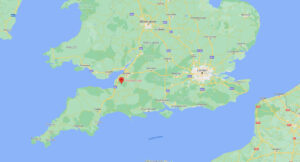
The map coordinates for Cheddar Gorge are approximately 51.2868° N, 2.7711° W.




